A fast-moving depression whipped across the North Atlantic and struck the Isle of Tiree early on Sunday 13 September 2020. Conditions looked ideal for bringing a North American bird or two across 'the pond' and I even fantasized about finding an Empidonax flycatcher. However, checks of my local patch at Balephuil later that day produced nothing new other than a Lesser Whitethroat and a small influx of Lesser Black-backed Gulls.
A fresh juvenile Common Rosefinch popped up briefly in our garden the following day and with the winds slackening in a ridge of high pressure, my bird-finding thoughts switched back towards drift migrants from the east. First thing on Tuesday morning, I casually opened the curtains of our lounge windows with a cup of tea in hand and was dumbfounded by what I saw! In exactly the same willow where the rosefinch had been the previous day, a boldly marked flycatcher eyed me from just a few metres away. Rich olive-green above, with a complete bold eye-ring, an orange lower mandible, a distinct yellow suffusion on the throat and down the breast, and very striking whitish wing-bars and edgings to the tertials and secondaries – it was an Empidonax flycatcher! I grabbed my camera and took a few record shots to make sure I wasn’t hallucinating.
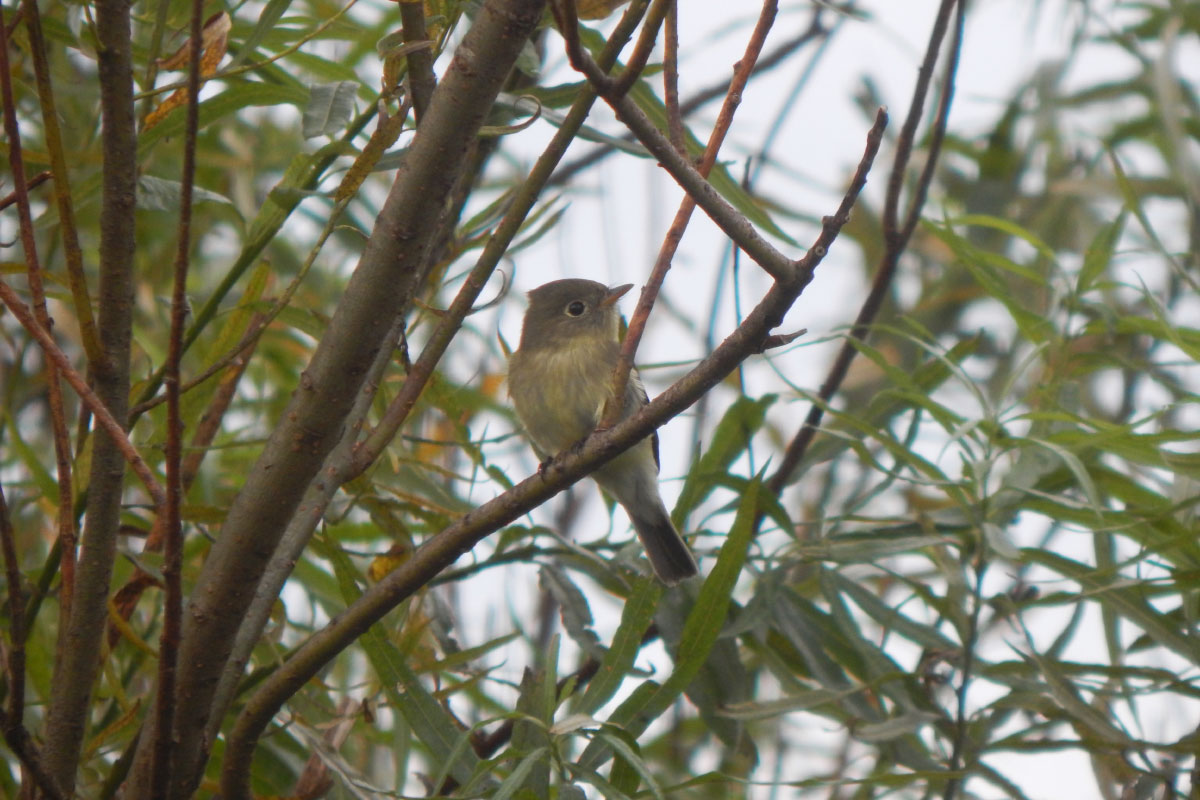
John couldn't quite believe what he was seeing when he looked out his lounge window on the morning of 15 September, finding himself face to face with an Empidonax flycatcher (John Bowler).
Identification was fairly straightforward: the shortish tail, large head with a "cute" expression and rather compact structure narrowed it down to being a Least or Yellow-bellied Flycatcher (thus avoiding the far trickier Willow/Alder/Acadian Flycatcher species grouping), while the yellow suffusion below and rich green upperparts, plus immaculate condition of its tail and flight feathers quickly pronounced it to be a first-winter Yellow-bellied Flycatcher – the first for the Western Palearctic – and a species I have seen before on migration in Mexico and Belize.
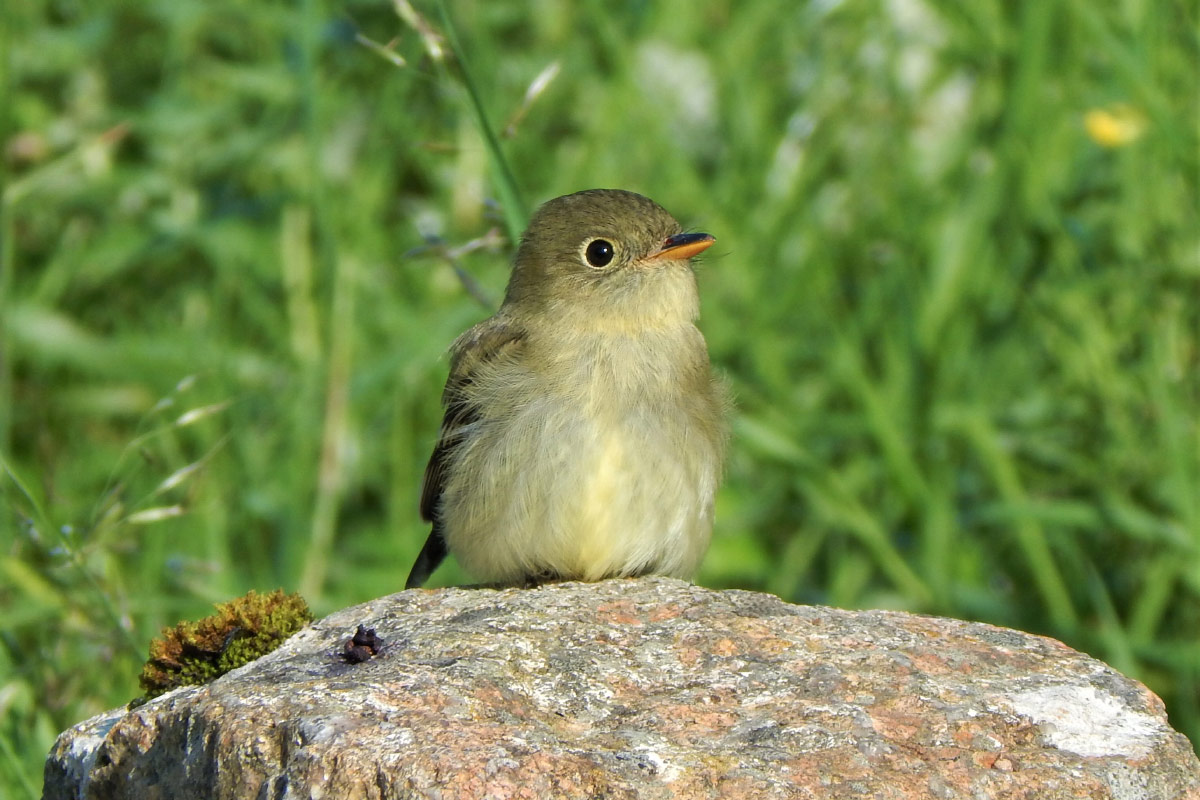
Rich olive-green above, with a complete bold eye-ring, an orange lower mandible, a distinct yellow suffusion on the throat and down the breast, plus the bird's overall 'cute' look, diagnosed the 'Empid' as Britain and the Western Palearctic's first Yellow-bellied Flycatcher (John Bowler).
With the identification sorted, I then simply enjoyed watching this exotic-looking bird foraging happily in the trees that I have planted over the years in our sheltered garden for just such an occasion. Island-based birders live for moments like this, but this was big news to break to my wife. Together with a few others, we mulled over what to do with the news, particularly in the light of the worsening coronavirus situation on the mainland and the absence of the disease on the island, which has a large vulnerable elderly population. In the end, news of the bird somehow found its own way out, as was perhaps inevitable, and we were faced with a potentially large twitch the following day.
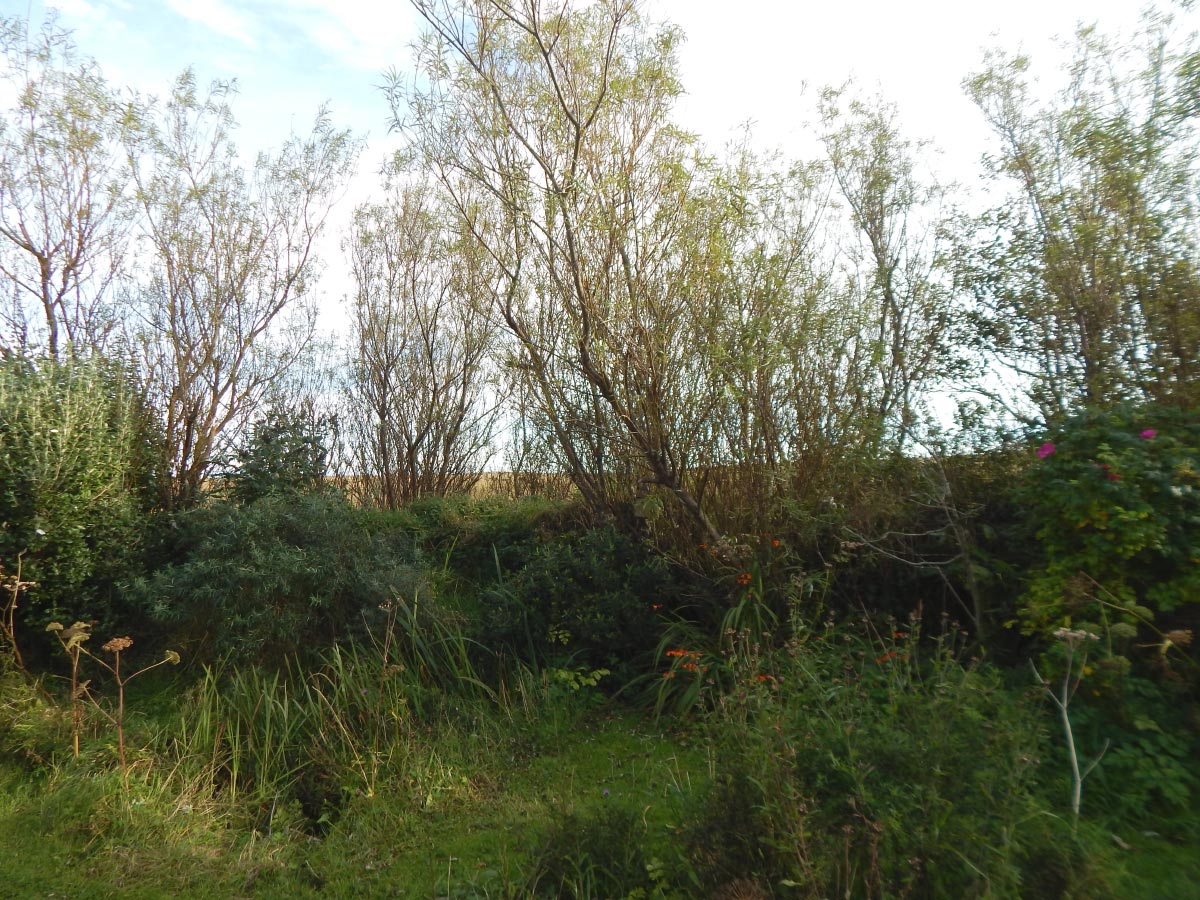
Viewable from John's lounge, these willows were where the Yellow-bellied Flycatcher first appeared (John Bowler).
With great help from Hayley Douglas, the Tiree Ranger, my wife Janet and our very accommodating neighbours, we were able to manage a successful socially distanced twitch following Scottish COVID-19 guidelines over the next three days, during which time some 120 birders got to see the bird in the two neighbouring private gardens. However, with mounting concerns on the Tiree community's social media channels with regards to coronavirus and the ongoing influx of birders to the island from all over Britain, we were forced to close access to the gardens from midnight on Friday.
A small trickle of birders continued to arrive and try their luck each day until the bird finally left, with most managing to connect with it from the adjacent track. The flycatcher finally departed on the night of 23 September after a nine-day stay, during which it fed voraciously on a wide range of insects including our neighbours' honeybees and showed no concern at all for the close attention it received.
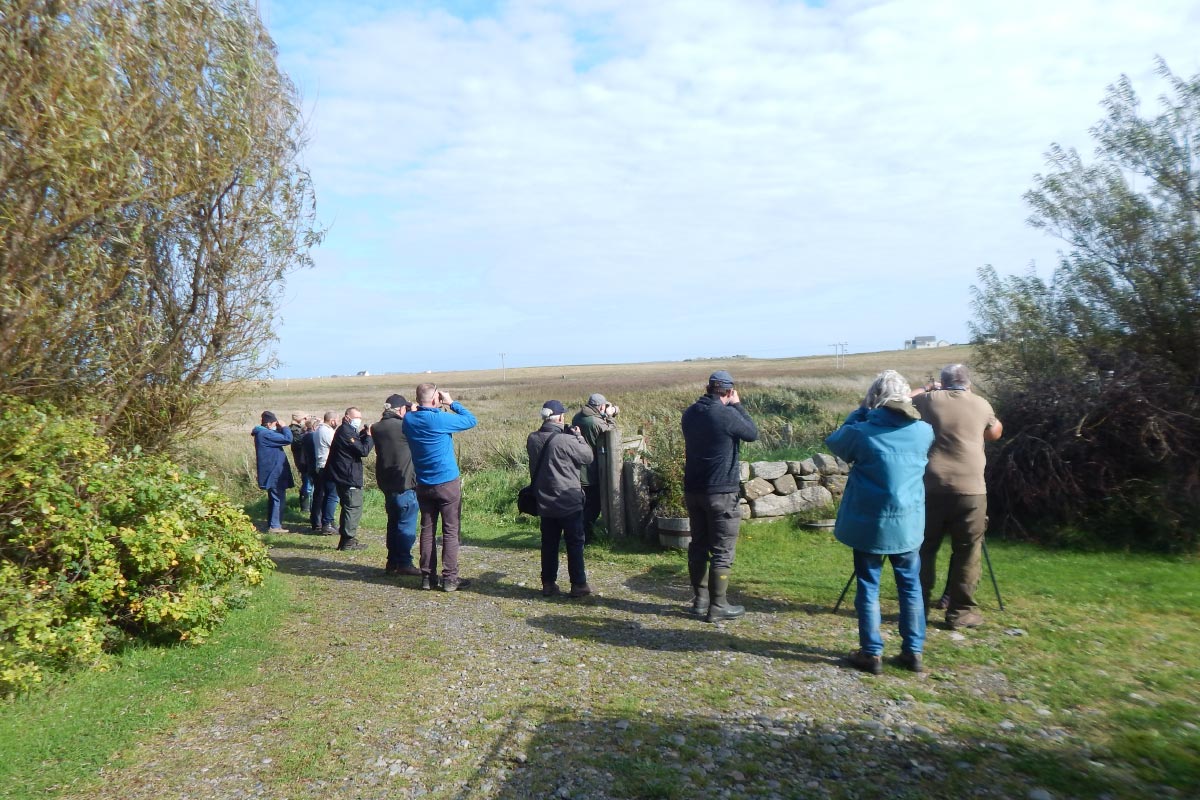
A small twitch was present on each day, with all birders behaving in exemplary fashion and exercising social distancing (John Bowler).
All visiting birders were very well behaved and together raised at least £1,800 for the Tiree Community Trust, which was much appreciated and should help to quell any lingering concerns about the twitch on the island. I would also like to take this opportunity to thank the BirdGuides team for their very sensitive handling of what was, given the current climate over coronavirus, a very difficult situation to deal with. If you would like to make a donation, you can still do so here.
Lifetime ambition achieved, with that dazzling American flycatcher still fresh in my mind, I'm tempted to hang up my bins now – but I know of course that I won't!
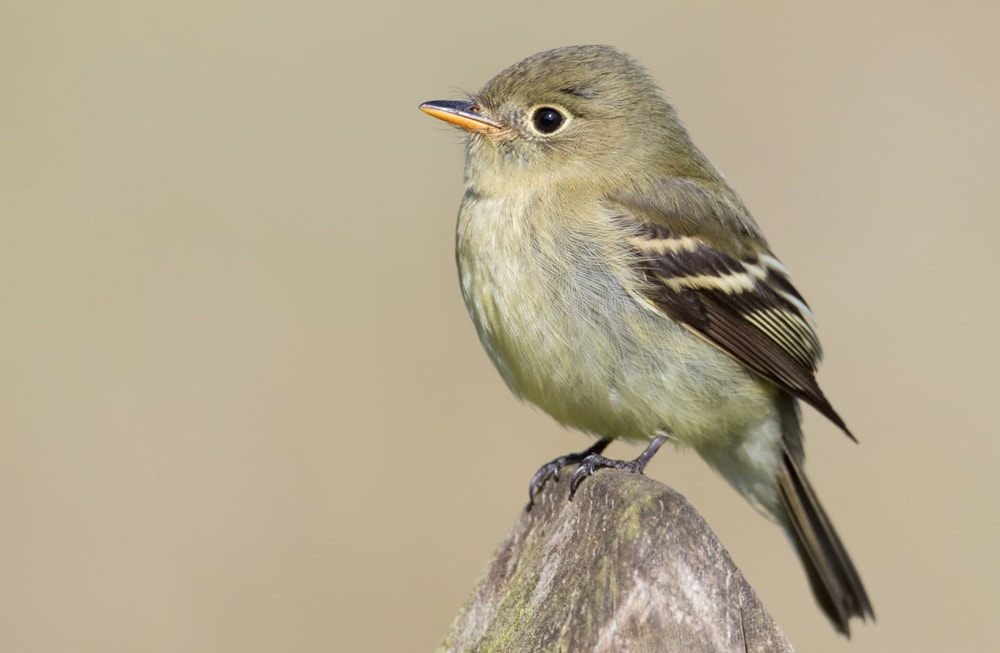
The Yellow-bellied Flycatcher went on to show well until 23 September, when it departed overnight (Chris Griffin).


